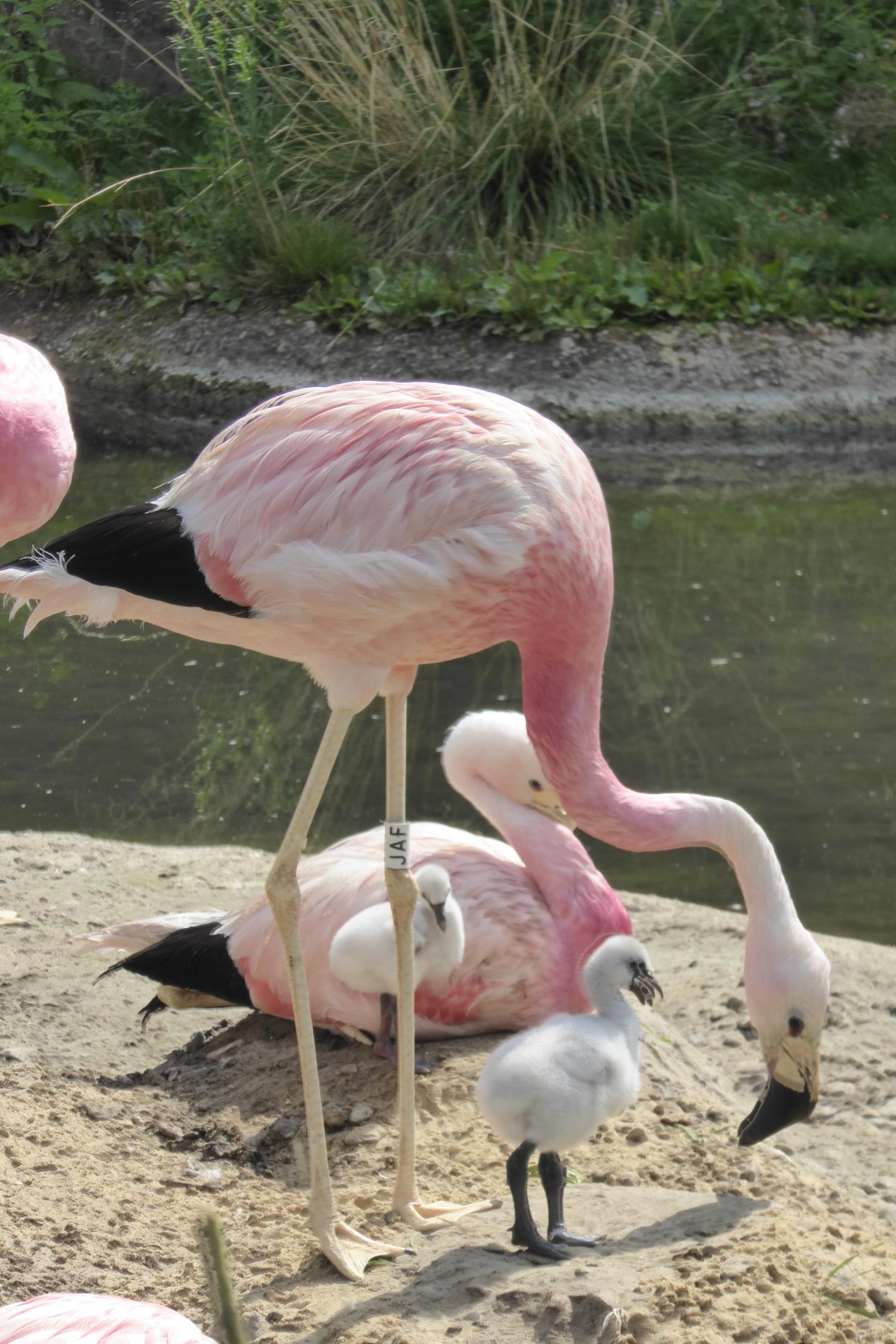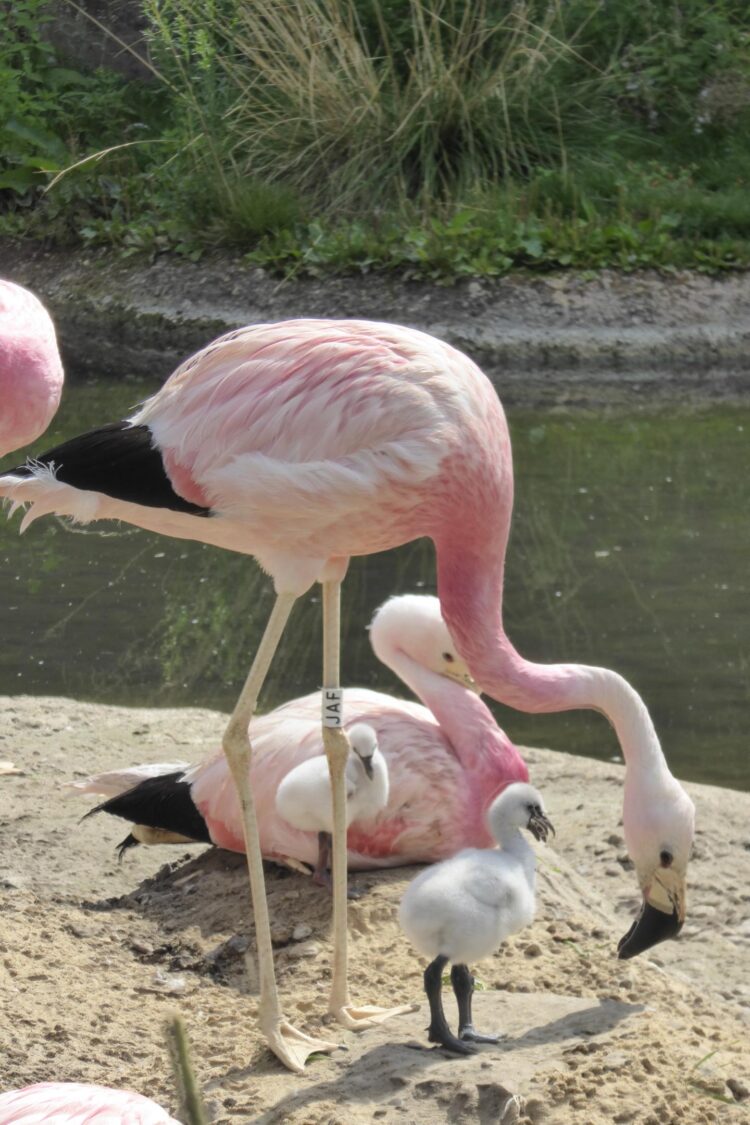
Credit: Paul Rose
Flamingo chicks raised by foster parents from another flamingo species develop normally, scientists say.
Six Chilean flamingo chicks were reared by Andean flamingos – a species of similar size and behaviour – at WWT Slimbridge Wetland Centre in the summer of 2018.
University of Exeter scientists studied the chicks’ behaviour after they re-joined the Chilean flamingo flock early in 2019.
The results showed fostering had no negative effects, with fostered flamingos still forming stable social ties – making “friends” and behaving like parent-reared birds.
“Slimbridge’s Andean flamingos hadn’t nested for about 20 years,” said Dr Paul Rose, of the University of Exeter.
“But in the hot summer of 2018 – probably due to the high temperatures – they made nests and laid eggs.
“Unfortunately, the eggs turned out to be infertile, possibly due to the age of the birds – some of them are approaching their 60s.
“To give them enrichment (allowing them to behave naturally), keepers placed six eggs from the Chilean flamingo flock to be raised by the Andean flamingos.
“This gave us a rare opportunity to study the effects of fostering – although it should be noted that these species are remarkably similar, and this would not have been attempted otherwise.”
Peter Kidd, then a student on Exeter’s MSc Animal Behaviour course, observed and recorded the chicks’ behaviour from April to July 2019 (after their return to their own flock).
These observations were used to study integration and social networks.
“The six fostered chicks and seven parent-reared chicks quickly bonded back together,” Kidd said.
“We found very slight behavioural differences – small enough to be explained by individual variation – and all chicks became embedded in the wider social network of the group.
“They all had favoured ‘friends’ to spend time with, which is normal flamingo behaviour.”
Species including the Andean flamingo rare in captivity (only two flocks worldwide) and are classified as “vulnerable” in the wild.
Flamingos can be challenging to breed regularly in captivity, so the findings about successful fostering may help zoo conservation programmes.
“Foster rearing appears to be a safe method for conservation breeding of these species if done correctly,” Dr Rose said.
“It is important to note that this fostering event went so smoothly because of the expert flamingo knowledge within the animal care teams at WWT.”
The paper, published in the Journal of Zoo and Botanical Gardens, is entitled: “Influences of rearing environment on behaviour and welfare of captive Chilean flamingos: a case study on foster-reared and parent-reared birds.”
###
Media Contact
Alex Morrison
[email protected]
Related Journal Article
http://dx.





